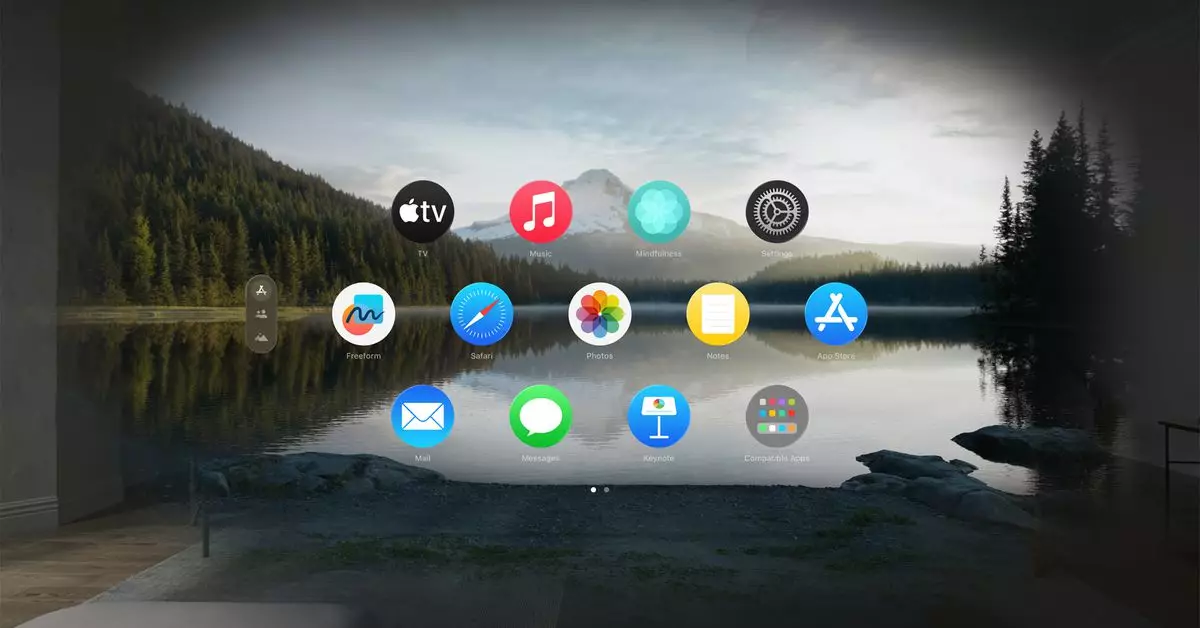It seems that Apple’s big first-party apps, including Podcasts, News, Calendar, and Reminders, will be part of the initial launch for the Vision Pro. At first glance, this may seem like a bizarre choice for Apple’s new platform. After all, these apps don’t necessarily require mind-blowing immersive 3D effects. However, the success of the Vision Pro as a productivity device may depend on how well its gaze-and-tap interface translates to these touch-first apps. If the main input method of the Calendar app doesn’t quite get the job done, it could potentially sour the experience of this $3,500 device.
The Muted Vision Pro App Story
According to Mark Gurman’s Power On newsletter for Bloomberg, there hasn’t been much excitement surrounding the Vision Pro app development. Developer enthusiasm seems to be low, and there are several factors contributing to this. One of the reasons is Apple’s 30 percent App Store cut, which can be a deterrent for developers, especially considering the limited number of units Apple may have manufactured for the initial launch. This small pool of users may not be enough for developers to justify investing time and resources into creating apps for the Vision Pro.
Independent developers who weren’t able to access a Vision Pro developer kit may face additional challenges. The high price of entry for the device may make it difficult for them to justify the investment. In a Mastodon post quoted in the Bloomberg story, app maker Paul Haddad expressed his hesitation towards spending a large amount of money on a device without being able to thoroughly test his app on it beforehand. This sentiment may be shared by other independent developers, further dampening the enthusiasm for the Vision Pro app ecosystem.
Not only are independent developers facing challenges, but major companies are also showing a lack of interest in developing native apps for the Vision Pro. YouTube and Netflix, two prominent platforms, have opted out of creating native apps for the headset. Instead, users can access these services through their websites on Safari. While this may be a viable alternative, it raises questions about the overall engagement of users with the Vision Pro. If popular apps and services are not fully integrated into the platform, it may hinder its widespread adoption and appeal.
However, it’s important to note that the success of a device doesn’t solely rely on its app ecosystem. Apple’s previous products, such as the Apple Watch and Apple TV, have not been known for their vibrant app ecosystems. Yet, people still enjoy using these devices. The Vision Pro, as a distinct platform from the iPad and iPhone, may find its own niche and attract users who appreciate its unique features and capabilities.
The Need for Developer Enthusiasm
While the Vision Pro may not necessarily rely on a robust app ecosystem, the lack of developer enthusiasm is still cause for concern. To truly thrive and offer a diverse range of experiences, the Vision Pro will need more than just a few cool 3D movie apps. Developers play a crucial role in shaping the user experience and providing innovative solutions on a new platform. Without their support and dedication, it may be challenging for the Vision Pro to reach its full potential.
The Vision Pro’s app story seems to be off to a muted start. The inclusion of first-party apps may raise eyebrows, and the lack of developer enthusiasm and major company support raises questions about the device’s future. However, considering Apple’s track record with successful devices that lacked vibrant app ecosystems, it’s possible that the Vision Pro will find its own niche and attract a dedicated user base. Only time will tell how developers and users embrace this new platform and whether it can truly thrive.


Leave a Reply